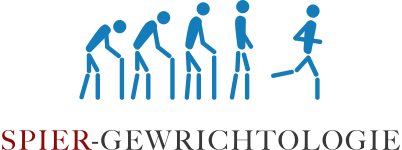Nederlands
English
GEZONDHEID
Gevaren van zitten

Muscle degeneration
Mushy abs
When you stand, move or even sit up straight, abdominal muscles keep you upright. But when you slump in a chair, they go unused. Tight back muscles and wimpy abs form a posture-wrecking alliance that can exaggerate the spine’s natural arch, a condition called hyperlordosis, or swayback.
Tight hips
Flexible hips help keep you balanced, but chronic sitters so rarely extend the hip flexor muscles in front that they become short and tight, limiting range of motion and stride length. Studies have found that decreased hip mobility is a main reason elderly people tend to fall.
Limp glutes
Sitting requires your glutes to do absolutely nothing, and they get used to it. So glutes hurt your stability, your ability to push o and your ability to maintain a powerful stride.
Mushy abs
When you stand, move or even sit up straight, abdominal muscles keep you upright. But when you slump in a chair, they go unused. Tight back muscles and wimpy abs form a posture-wrecking alliance that can exaggerate the spine’s natural arch, a condition called hyperlordosis, or swayback.
Tight hips
Flexible hips help keep you balanced, but chronic sitters so rarely extend the hip flexor muscles in front that they become short and tight, limiting range of motion and stride length. Studies have found that decreased hip mobility is a main reason elderly people tend to fall.
Limp glutes
Sitting requires your glutes to do absolutely nothing, and they get used to it. So glutes hurt your stability, your ability to push o and your ability to maintain a powerful stride.
Bad back
Inflexible spine
Spines that don’t move become inflexible and susceptible to damage in mundane activities, such as when you reach for a coee cup or bend to tie a shoe. When we move around, so disks between vertebrae expand and contract like sponges, soaking up fresh blood and nutrients. When we sit for a long time, disks are squashed unevenly and lose sponginess. Collagen hardens around supporting tendons and ligaments.
Disk damage
People who sit more are at greater risk for herniated lumbar disks. A muscle called the psoas travels through the abdominal cavity and, when it tightens, pulls the upper lumbar spine forward. Upper-body weight rests entirely on the ischeal tuberosity (sitting bones )instead of being distributed along the arch of the spine.
Inflexible spine
Spines that don’t move become inflexible and susceptible to damage in mundane activities, such as when you reach for a coee cup or bend to tie a shoe. When we move around, so disks between vertebrae expand and contract like sponges, soaking up fresh blood and nutrients. When we sit for a long time, disks are squashed unevenly and lose sponginess. Collagen hardens around supporting tendons and ligaments.
Disk damage
People who sit more are at greater risk for herniated lumbar disks. A muscle called the psoas travels through the abdominal cavity and, when it tightens, pulls the upper lumbar spine forward. Upper-body weight rests entirely on the ischeal tuberosity (sitting bones )instead of being distributed along the arch of the spine.
De praktijk Spiergewrichtologie heeft de oplossing voor deze problemen.
Zorgen voor soepele spieren en gewrichten

